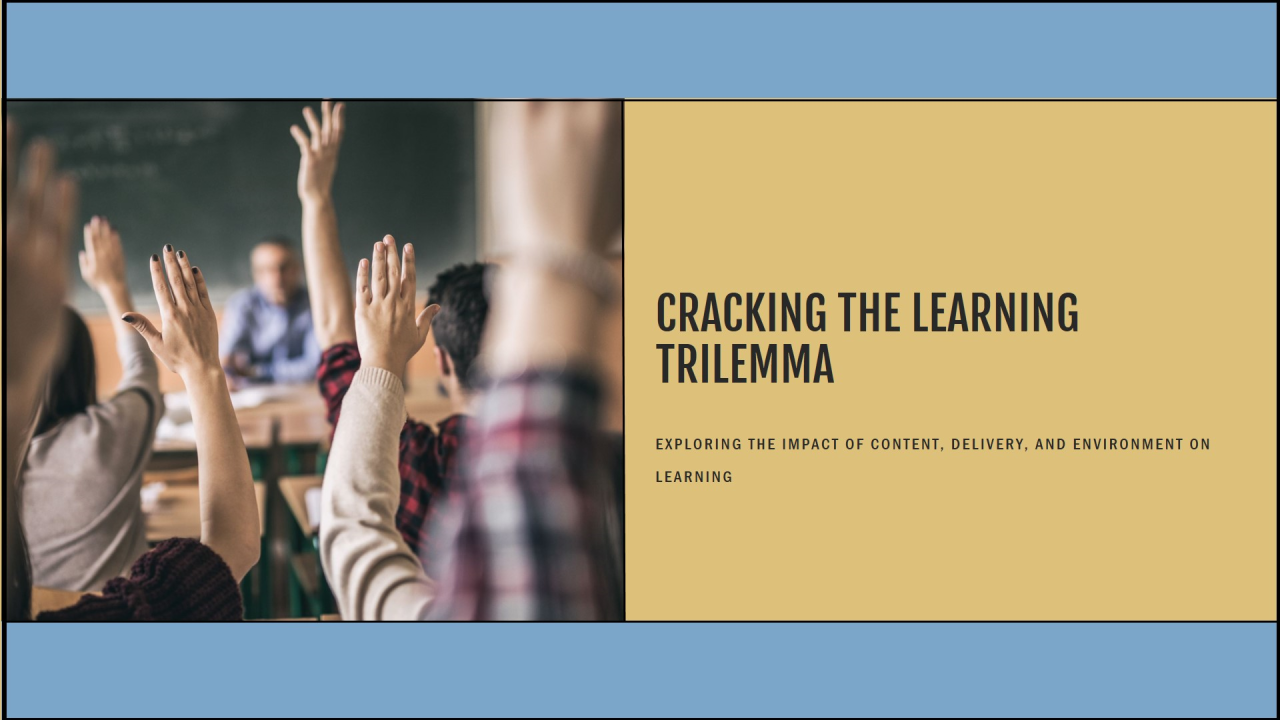
The Learning Trilemma: Decoding how content, delivery, and environment affect learning interventions.
In the fields of educational psychology and instructional design, there is an argument that never ends: Which is most important in determining how well a learning intervention works: content, delivery, or ambience? Even though this question seems simple, it actually reveals a complex web of factors that work together to improve the learning process.
Content: The Building Blocks of Knowledge
What is taught matters most in any training process. Information must be of high quality, relevant, and well-structured for effective learning outcomes. Even if the delivery is interesting and the setting is good, strong content is still needed to reach educational goals.
However, information is not enough on its own. The saying "knowledge is power" oversimplifies how people learn and ignores important parts of how that information is gained and retained.
Delivering: The Way to Understand
The way that information is delivered can have a big effect on how engaged and knowledgeable students are. Effective communication turns vague ideas into information that is easy to understand and useful. It includes how well the facilitator can communicate and the chosen methods, technology, and interactive parts.
However, even the most interactive delivery cannot compensate for bad material or a bad place to learn.
Ambience: What Gets People Engaged?
The physical and mental learning setting is often overlooked, but it is very important for helping people learn. A helpful, comfortable, and stimulating environment can help students focus, lower their stress, and feel like they are part of a group.
Even so, even the best environment cannot compensate for fundamental problems with the material or the delivery.
The Approach of Synergy
Educational study suggests a more nuanced view rather than putting one aspect above others. The best learning interventions use the way that material, delivery, and atmosphere all work together to help students learn.
Take the flipped classroom approach as an example. This method improves information through pre-class activities and delivery through interactive in-class activities and creates an environment for working together that encourages active learning.
A Close Look
It might be easy to say that one thing is the most important, but this narrow view doesn’t show how learning works in its entirety. Instead, facilitators and instructional designers should use a systems thinking method, remembering that:
1. Content is what we learn.
2. Delivery makes it easier for that material to be sent and absorbed.
3. The environment sets the stage for effective transfer and internalisation.
Each factor may be important differently based on the learning situation, goals, and audience. In a self-paced online course, for instance, the material and delivery might be more important than the atmosphere. However, the way delivery and atmosphere work together in a collaborative class might be very important.
In conclusion
There is no good answer to the question of which is more important in a learning intervention: topic, delivery, or atmosphere. Each part is necessary for the whole system to work and are all linked together. Isolating these parts is not the key to effective learning situations; the key is ensuring they work well together.
Moving beyond simple hierarchies and embracing a more holistic, adaptive approach to learning design is important as we continue to navigate the changing landscape of education. This kind of design considers how material, delivery, and atmosphere affect useful educational outcomes.

Recent Comments